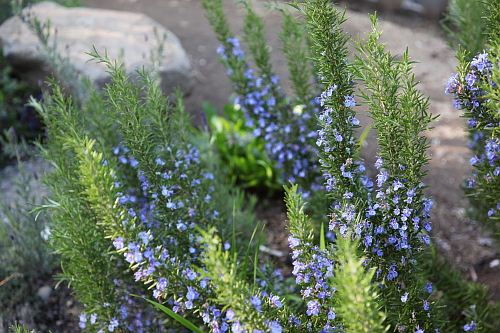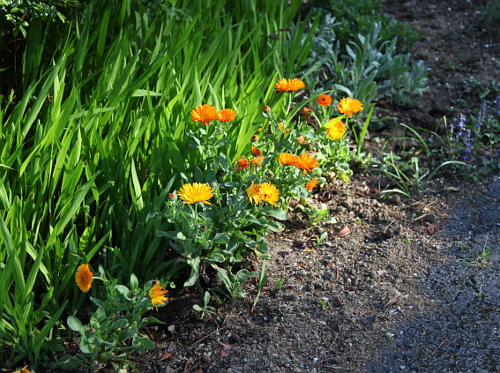This is a repost from a blog article I recently wrote for Tend with a few additions I have learned since I originally wrote it. I have also added a list dedicated to flowers here. I have had a few searches for “deer resistant flowers” showing up in my stats, so I thought it might be useful to share this here as well.

When we first moved to our home, we felt pretty lucky to have deer frequent our yard. They are beautiful, peaceful creatures and we love to observe their antics, and behaviors amongst each other. As soon as we started to think about gardening though, and particularly landscaping, we realized we were in for quite a challenge. Our dream landscape, which would be somewhat of an unending, textured garden; with fruit trees, berries, and a diverse array of edible and medicinal herbs and plants…. vs reality…. Oh my. Where to begin.

One of our very first projects here was to fence in a small veggie garden, and then to fence in a few fruit trees. Fencing was a relatively easy solution, even though not ideal. The greater landscape has posed a much bigger challenge, and one we have been slowly trying to learn how to overcome. A lot of the things we like to eat, deer like to eat as well.

Now that we have lived here for nearly 4 years we have learned some things, and finally, I am starting to feel like it is actually going to be possible to achieve a full, lush, beautiful, and even edible landscape.

We started out knowing of very few plants we could successfully grow unprotected (we planted lots of lavender and rosemary that first year!). Some of the things that are said to be deer resistant aren’t necessarily, and there were some tough lessons involved there. And sometimes plants that are typically pretty resistant, will suddenly get eaten for a short period of time, though in these cases, it usually passes and the plants will fully recover (some recent surprises included lemon balm and catnip). With time, observation and experimentation, we have a growing list of plants we can grow and enjoy here.


Following, is a list of edible and/or medicinal plants that have proven to us to be deer resistant. This doesn’t mean the deer don’t taste some of these things now and then (and keep in mind, a taste can mean a whole plant if you only have a small amount), but these plants have stood the test of time, and are thriving and look beautiful – or in the case of annual edibles, are able to produce a harvest.
calendula
sage
dill
fennel
rosemary
lavender
oregano and marjoram (smaller leaf varieties)
thyme
savory
mint
lemon balm
catnip
chives (sometimes!)
rhubarb
artichoke
garlic
onions
potatoes
jerusalem artichoke (tops are often getting nipped here, so don’t be bummed if you don’t get many flowers, but you will have edible tubers)
summer squash
winter squash
.
Flowers:
foxglove
poppies
daisies
black eyed susan
lavender
calendula
cosmos (to some degree)
catnip
rhododendron
daffodils
sweet woodruff
calla lily (which is not a true lily)
iris
grape hyacinth
lamb’s ears
hellebore
fuchsia

Part of my goal for this post was to offer some of our experience to those of you who have similar challenges, but also to see if there might be some of you that have learned some things about deer resistant gardening that you could share.
We will be working on adding to this list this year. If you have anything to add, I would love to hear! With what I’ve learned so far, I have a better sense of what deer like and what they don’t, and am looking forward to experimenting with some new herbs this spring and summer.

jodi
Oh the dear deer. We’ve had good luck with hellebore, which I love and are nice because they’re generally evergreen. I’m also wondering if you have tried crocosmia? I think there’s a chance they’ve naturalized along the Oregon Coast, but I have two kinds, a taller red one and a shorter that is orange. They end up forming lush, tall clumps and the deer don’t seem interested in them.
abby
I forgot about hellebore – doing well here too and left alone completely. Thanks for the reminder as that’s one we should add more of here. Crocosmia gets eaten pretty heavily this time of year (we have tons of the shorter orange variety) so rarely does one ever make it to flower. The greens are pretty a lot of the year though.
Liesl
This is a helpful post. Thanks for posting it!
So far, apart from some damage to our blueberries and raspberries, they haven’t been eating too much. (Knock on wood!) Our hostas, which usually fall victim, are looking lovely. And the fruit trees all look in one piece.